You must create a site configuration with the basic settings for each Barracuda SecureEdge appliance. If your appliance is already ordered and installed on site, it will wait for the site configuration and apply the configuration as soon as it is available. If, however, the appliance is not yet installed, it will apply the configuration as soon as it is connected to the Internet.
Before You Begin
For Microsoft Azure:
Create a Virtual WAN in Microsoft Azure. For more information, see How to Create a Microsoft Azure Virtual WAN.
Create an Edge Service.
Step 1 Create the Site Configuration
Go to https://se.barracudanetworks.com and log in with your existing Barracuda Cloud Control account.
The chosen Tenant/Workspace is displayed in the top menu bar.

Click the expandable drop-down menu and select the workspace your appliance should be assigned to.
In the left menu, click the Infrastructure icon and select Sites.
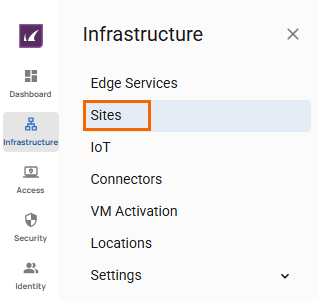
The Sites page opens. In the top-right corner of the window, click New Site.

The New Site Basic Information blade opens. Enter values for the following:
Name – Enter the name of the site.
Edge Service – Select the edge service you want your site to connect to from the drop-down menu. Select (None) if you do not want this service to connect to another one.
Root Password – Enter the root password.
Confirm Root Password – Retype the root password to confirm.
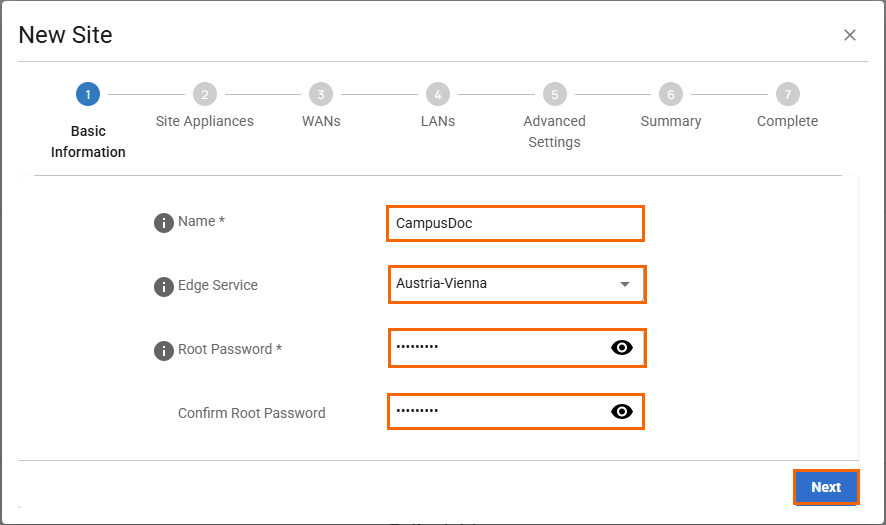
Click Next. The Site Appliances blade opens.
Select your appliance from the list of appliances linked to your account. For a high availability cluster, select two appliances. For more information on high availability, see High Availability. Note: After ordering, it might take up to 3 hours before your device is listed.
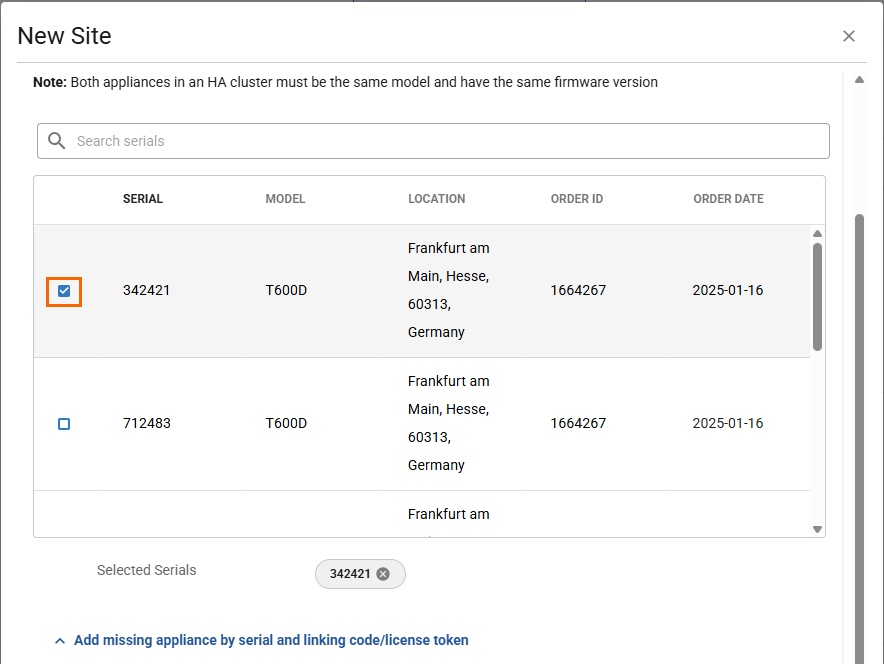
Click Add missing site appliance by serial/linking code and specify values for the following:
Serial – Enter the serial number of your appliance.
Code/Token – Enter the linking code (located on the back of the Quick Start Guide shipped with your hardware appliance), or the token of your VTx appliance.

Click Add to add the device to your account.
Click Next. The WANs blade opens.
Select the number of desired WAN connections from the drop-down list.
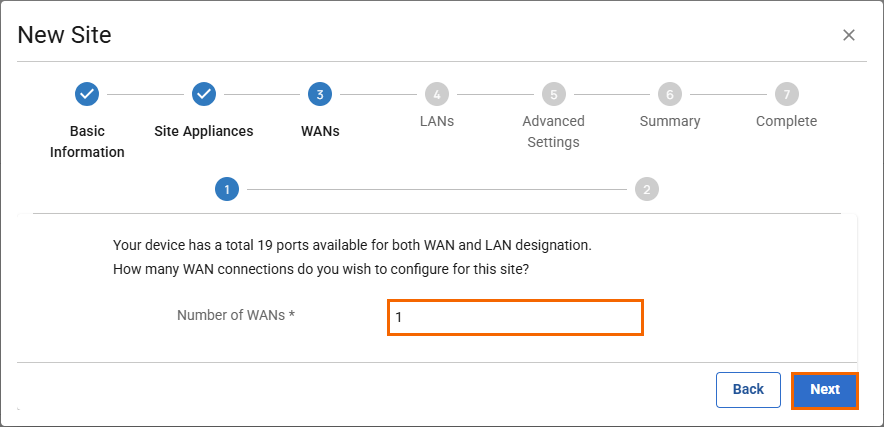
Click Next. The Configure WAN link blade opens.
Specify values for the following:
Name – Enter a name for your uplink.
Type – Select dynamic from the drop-down list.
Port – Select the port where your uplink is connected to. Default for DHCP connections is p4, except model T93 Revision A where DHCP is located on p2. Note: Port 1 is reserved for high availability.
Virtual LAN ID (Optional) – If required, enter the Virtual LAN ID this interface is connected to.
Provider Pinning – Select a provider classification from the drop-down list.
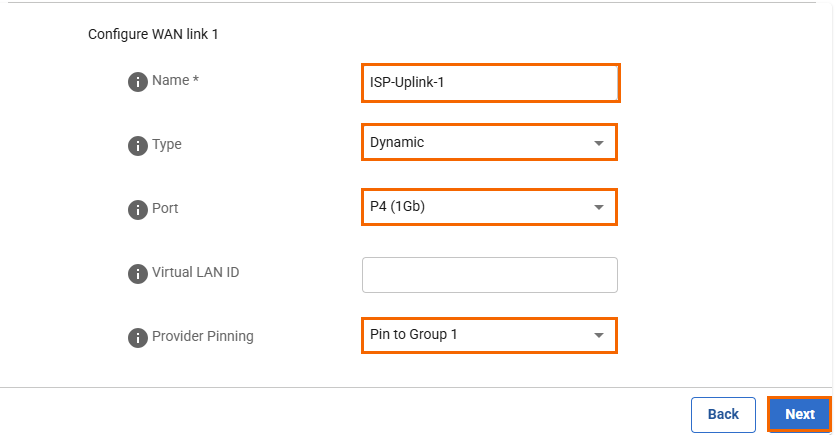
Click Next. The LANs blade opens.
Select the number of desired LAN connections from the drop-down list.
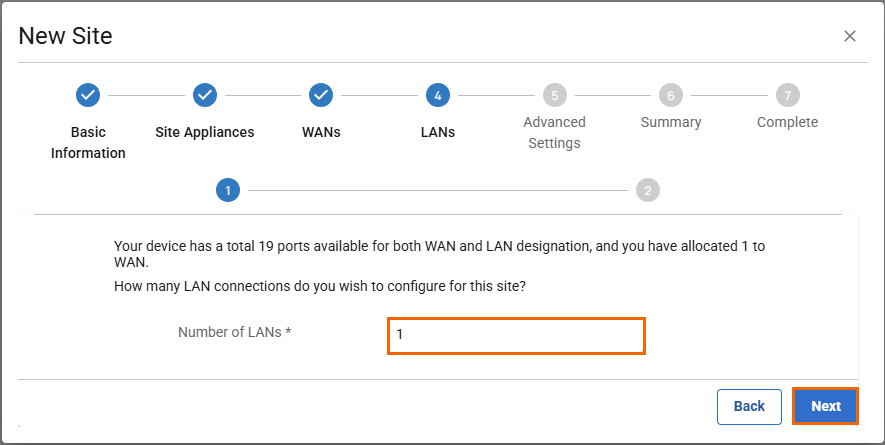
Click Next. The Configure LAN link blade opens.
Specify values for the following:
Name – Enter a name for your LAN.
Port – Select a port from the drop-down list where the LAN is attached to. Note: Port 1 is reserved for high availability.
Virtual LAN ID (Optional) – If required, enter the Virtual LAN ID this interface is connected to.
IP Address – Enter the IP address.
Netmask – Enter a number between
0and32for the subnet mask.DHCP – Select DHCP from the drop-down menu. You can choose between Disabled, DHCP Service, and DHCP Relay. If DHCP Service is enabled, you must enter the First IP Address and the Last IP Address. IP addresses within this range will be automatically assigned via DHCP. Note: For DHCP Relay, you must first configure DHCP Relay Server via Infrastructure >Settings > General. For more information, see How to Configure the DHCP Relay Agent in SecureEdge.
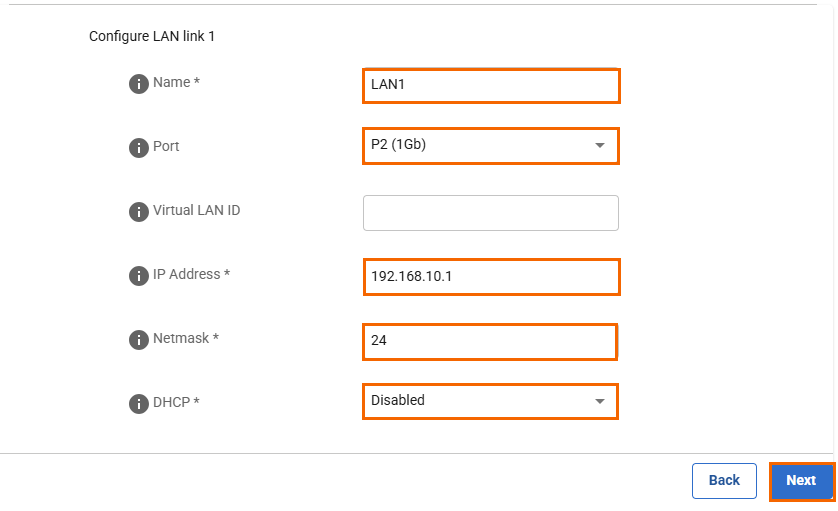
Click Next. The Advanced Settings blade opens.
Specify values for the following:
Update Window Timezone – Select Dynamic from the drop-down list, or select the time zone where the box is located.
Primary DNS – Enter the IP address of the primary DNS server.
Secondary DNS – Enter the IP address the secondary DNS server.
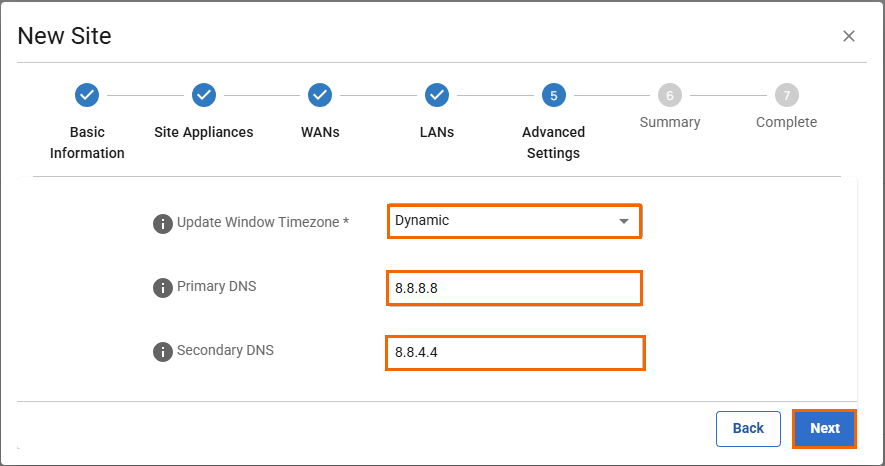
Click Next. The Summary blade opens.
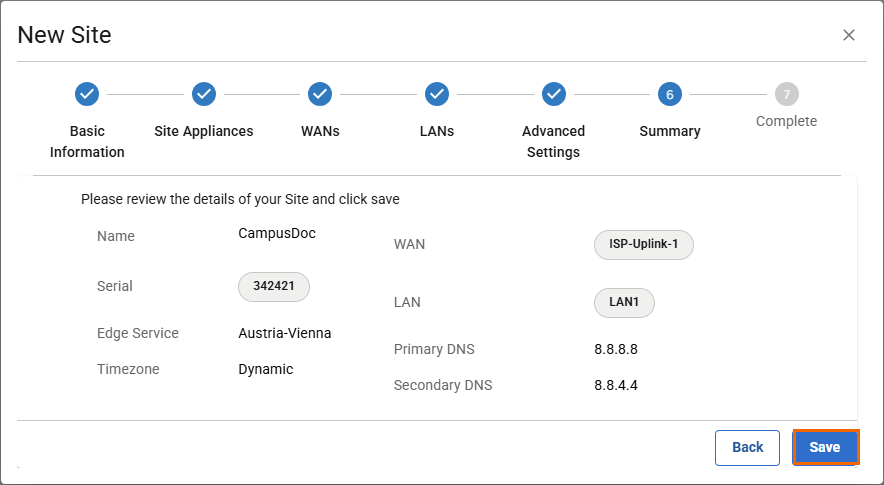
Review your specifications. If everything is correct, click Save.
Verify that your site configuration has been created successfully and click Finish.
The appliance will automatically apply the configuration upon its first boot.
Step 2. Deploy the Site Appliance
You can use either Barracuda SecureEdge hardware appliances or virtual appliances for the most common hypervisors.
For more information, see Hardware Deployment and Virtual Systems (VTx) Deployment.
